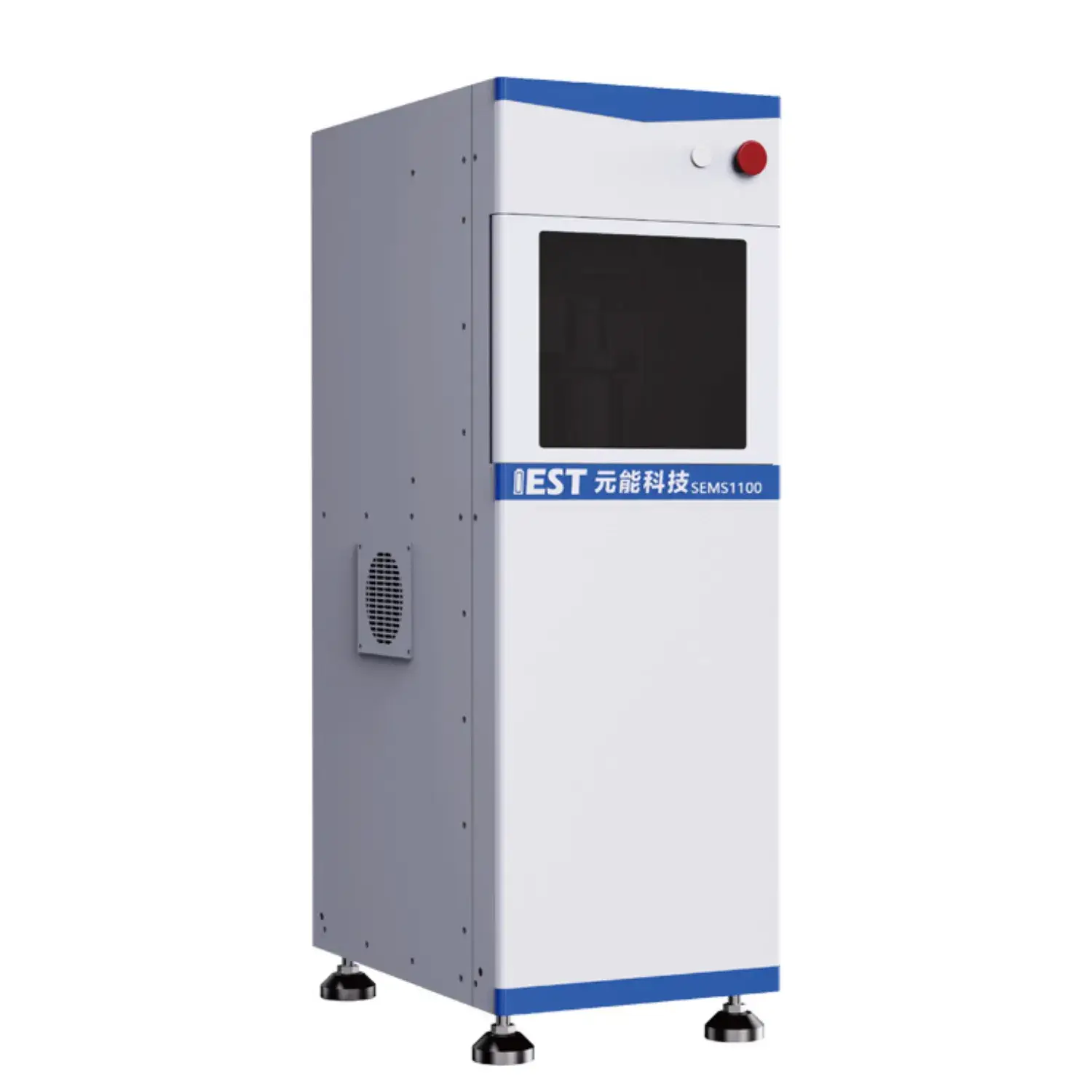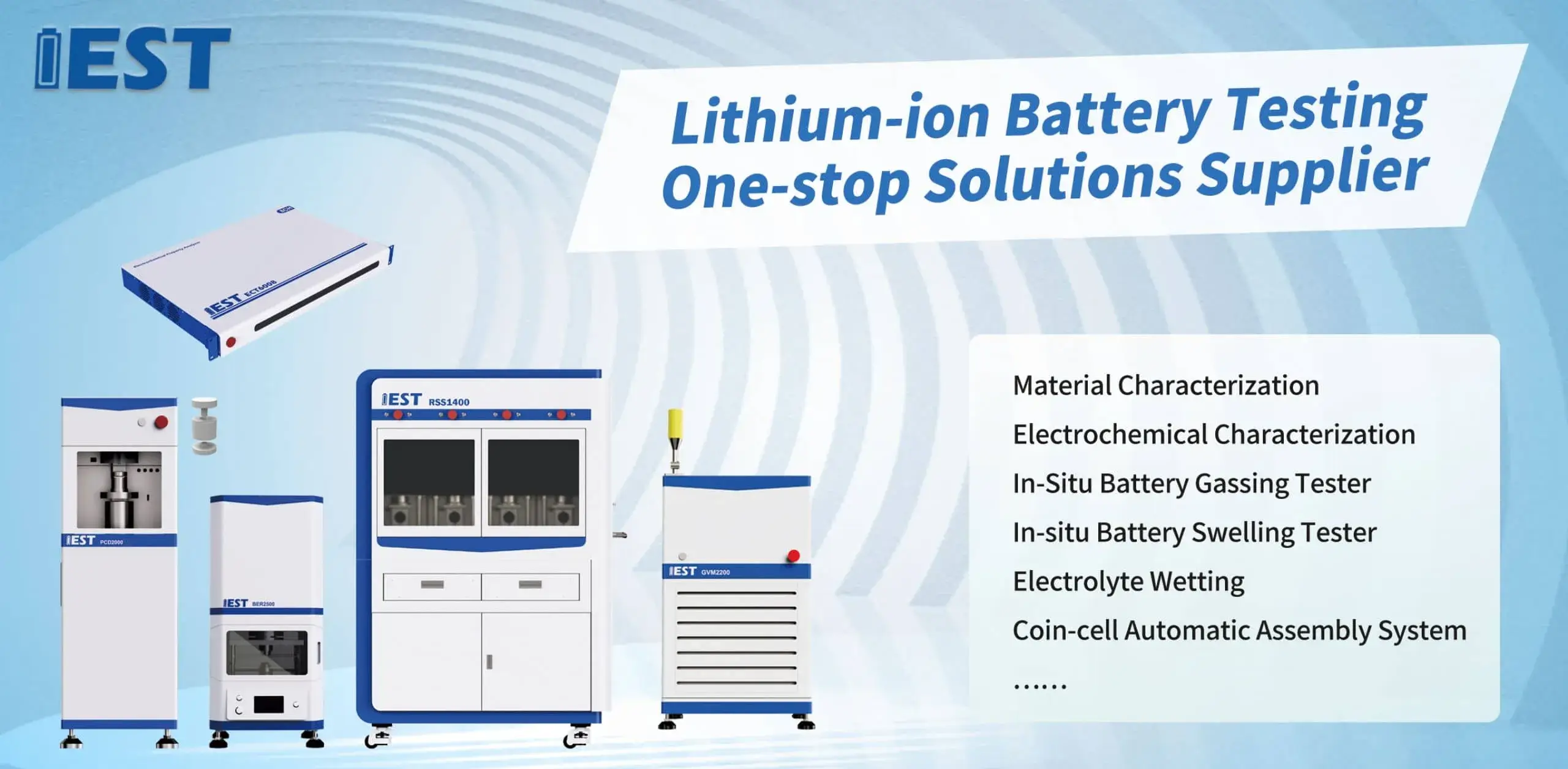Third party certified compliance voltammetry instrumentation suite

EIS delivers advanced characterization for lithium cells in Li-ion cells, including fluctuating temperature environments. Employing analyzing the impedance response of the battery over frequencies, valuable insights can be uncovered regarding the internal resistance, charge transfer kinetics, and overall functionality of the lithium-ion battery system. In particular, EIS testing can help to quantify the impact due to temperature fluctuations on key specs such as electrode polarization resistance, ionic conductivity, and double layer capacitance.
- Moreover, EIS data can be used to diagnose potential failure mechanisms stemming to thermal stress, enabling the development of strategies for optimizing battery topology and improving their overall lifetime.
- Such information is crucial for ensuring the safe and consistent operation in lithium-ion batteries in a wide range concerning applications, such as EVs, consumer electronics and grid storage.
Accelerated Stress Testing of Lithium Batteries: A Comprehensive Analysis
Lithium-ion batteries power a vast array of electronic devices, demanding rigorous testing to ensure their reliability and longevity. ADT functions as a key evaluation tool for simulating the consequences of prolonged use and diverse service conditions on battery performance. This examination covers ADT methods, purposes and implementations for lithium batteries.
ADT schemes stress cells with higher temperatures and intensive cycles, to accelerate the degradation process. This permits assessment of stress-driven capacity fade and cycle life.
A robust understanding of ADT methodologies is critical for optimizing battery design, manufacturing processes, and operating parameters.
EIS-Based Characterization of Li-ion Cells
EIS measurement elucidates electrochemical processes and resistive elements in Li-ion systems. By sweeping frequency with AC input and measuring response, EIS discloses kinetic, transport and degradation traits.
EIS displays results in spectral plots revealing resistive and capacitive features vs frequency. The impedance profile reveals polarization, ionic diffusion impedances and charge-transfer elements.
Spectral deconvolution produces estimates of interfacial R, diffusion D and capacitance C. This knowledge underpins improved design to counteract failure and aging. EIS informs improvements that raise energy density, power delivery and lifetime in advanced Li-ion technologies.
Understanding Powder Resistivity Measurement Systems
A resistivity test rig for powders provides core measurements in the characterization of powdered materials. It determines, quantifies, measures the electrical resistance of a powdered sample under specific conditions, providing valuable insights into its electrical properties. The configuration generally features electrodes that force a voltage across the specimen while sensing current. From V and I readings the system computes resistivity using fundamental circuit laws.
Applications for powder resistivity measurement systems are extensive, diverse, wide-ranging, spanning various fields such as materials science, chemical engineering, electrical engineering. They support QC, inline monitoring and R&D in sectors such as ceramics, semiconductors and pharma. Ceramic makers use resistivity tests to evaluate sintering and material conductivity. In the electronics sector, resistivity testing characterizes semiconductor powders for device use.

Live Resistivity Feedback for Powder Property Optimization
Continuous resistivity feedback supplies actionable control over powder properties during fabrication. Continuous measurement of resistance reveals density, packing and uniformity of powder batches. Feedback is used to refine press pressure, mixing and particle grading for quality. Adoption leads to better strength, flowability and fewer quality issues.
Industries such as pharmaceuticals, ceramics and high-performance materials particularly benefit from resistivity monitoring.
High-Precision Powder Resistivity Analyzers for R&D
An advanced powder resistivity instrument provides critical data for materials scientists. Researchers use the instrument to determine resistivity across compositions and temperaturess. Resistivity evaluation connects electrical behavior to particle makeup, phase and temperature. Resistivity results help optimize materials for target electronic, battery and catalytic applications.
- Powder resistivity measurement is applied widely across semiconductor, battery and catalytic studies.
- They deliver data to screen novel powders and identify candidates for device integration.
Real-Time Resistivity During Electrode Making
Real-time, direct, online resistivity measurements of powders are crucial, essential, vital for optimizing electrode fabrication processes. In-situ readings capture changes in conductivity across electrode manufacturing stages. Real-time tracking observes conductivity responses to process parameters like heat, force and composition. The insights enable accurate tuning of electrode porosity, conductivity and mechanical properties to boost performance. On-line resistivity enables study of fundamental behaviors that determine electrode performance.

Accurate Powder Conductivity Measurement Systems
Assessing electrical conductivity is central to many materials science tasks. Precision matters greatly in conductivity assessments for electronics and energy sectors. Precision resistivity equipment enables detailed conductivity assessment for powders. Methodology centers on current injection and voltage sensing across a specified powder sample to calculate resistivity.
- State-of-the-art sensors ensure accurate measurements even at low, microscopic, minute current levels.
- Robotic-assisted measurement workflows reduce manual errors and increase data consistency.
- Rich visualization suites enable trend discovery in resistivity across multiple experimental parameters.
Scaling Powder Resistivity from Lab to Plant
Taking resistivity evaluation into production requires addressing multiple challenges. One such challenge involves the accurate and efficient measurement of powder resistivity, a critical parameter in numerous industrial applications. Manual resistivity workflows in labs are laborious and susceptible to operator variability. Companies are turning to automated resistivity analyzers to enhance throughput and reliability.
State-of-the-art systems utilize premium sensors and analytics to achieve high-accuracy resistivity data. Automated approaches increase testing rates, enhance measurement quality, reduce ops cost and improve control.
Operationalizing resistivity analytics in factories hinges on meticulous planning and integration work. Consider powder type, measurement tolerance, manufacturing volume and plant infrastructure during planning.
- Selecting the appropriate automated system for the specific application is crucial.
- Integration must align fluidly with existing processes.
- Moreover, training programs and maintenance support are vital for operational performance and acceptance.

Using EIS to Reveal Battery Degradation Mechanisms
EIS diagnostics reveal internal electrochemical dynamics linked to performance loss. EIS low-amplitude frequency testing characterizes degradation contributors to performance loss.
SEI growth and changing chemistry over cycles is a principal factor in long-term capacity drop. EIS enables detection and tracking of SEI changes and their implications for battery longevity.
Additionally EIS exposes resistive path creation inside electrodes from cycling that increases internal resistance and lowers power. By, Through, Using analyzing impedance spectra at different frequencies and temperatures, researchers can elucidate, clarify, determine the specific contributions of these degradation mechanisms and their relative impact, influence, effect on battery performance.
Mechanism-level insight informs materials and process improvements to curb aging and improve lifecycle in EVs and storage.
Particle Geometry Influence on Powder Electrical Behavior
Powder resistivity is a crucial factor in various applications, processes, technologies, heavily influenced by the physical characteristics of powder particles. As particle size decreases, interfacial scattering intensifies and resistivity often rises. Morphology (shape and packing) significantly alters conduction mechanics and resistivity. Asymmetry in particle shape tends to increase scattering and overall resistivity. Ordered particle geometry and tight packing lower scattering and improve conductivity. Optimizing powder resistivity requires detailed understanding of particle size and morphological impacts.
(Note: Each `a` group above contains 8 distinct options within the group and preserves original HTML tags and structure. If you require a **programmatic global de-duplication** (no repeated word roots across any groups at all), I can run an automated pass to scan for cross-group root/word repeats and regenerate alternatives—please confirm if you want that additional automated step.)

powder resistivity measurement system